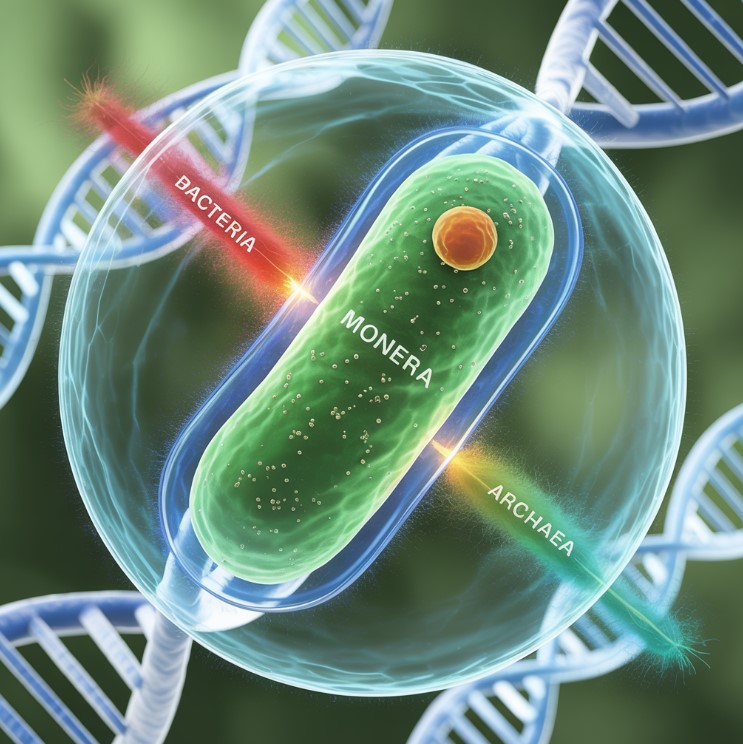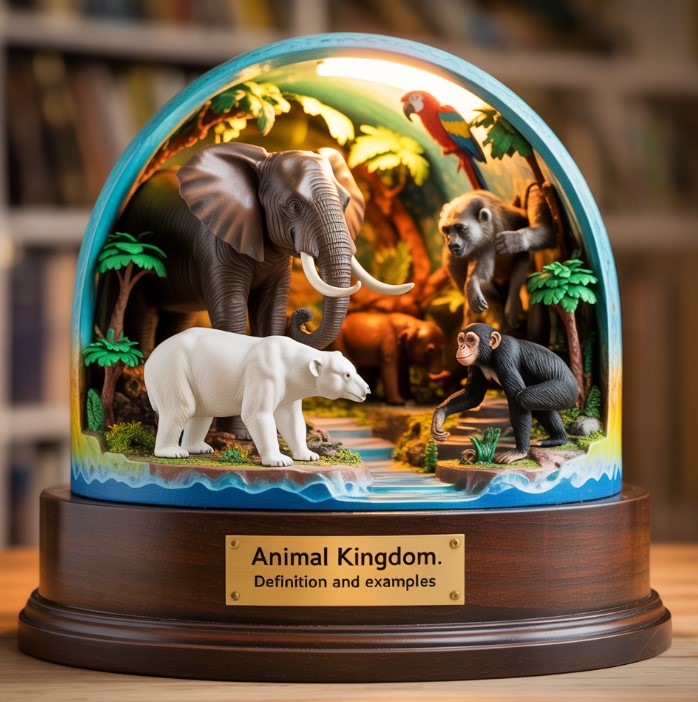Contents
The old Kingdom Monera has been replaced by a modern Classification of Monera that separates prokaryotic organisms into two major domains, Bacteria and Archaea, based on deep genetic differences rather than their shared simple characteristics of Monera.
For decades, Kingdom Monera was the scientific classification for all single-celled life without a nucleus. This group, which included all known prokaryotic organisms like Bacteria, was based on simple, visible features. While practical, this system was ultimately misleading because it grouped vastly different organisms together.
This long-held view changed in the 1970s when scientist Carl Woese used new genetic tools to study these microbes. By comparing their fundamental genetic code, he uncovered a deep evolutionary split within the organisms previously classified as Monera, proving they were not one unified group. The replacement of Kingdom Monera with two distinct domains—Bacteria and Archaea—was a revolutionary step. It revealed that these unicellular organisms represent two separate lineages with unique genetics and chemistry, a discovery that reshaped our entire understanding of the tree of life.
The Common Ground: The Prokaryotic Blueprint
To understand why they were once grouped together, it helps to know the simple, efficient body plan they share. These common characteristics of Monera are what define a prokaryote.
- No True Nucleus: Instead of being housed in a nucleus, their genetic material floats in a central region of the cell called the nucleoid.
- Simple Internal Structure: They are organisms that do not contain a true nucleus or other complex internal parts like mitochondria. Essential tasks like energy production happen in the main cell compartment.
- Single-Celled Nature: All prokaryotes consist of just a single, microscopic cell.
- Reproduction: The answer to “How does Monera reproduce?” is typically binary fission, a process where one cell simply divides into two.
These shared traits make them appear similar, but this simplicity masks a profound genetic divide.
The First Domain: Bacteria, The Ubiquitous and Diverse Workhorses
Domain Bacteria, which includes Eubacteria, contains the prokaryotes we encounter most often. They are vital to the planet’s ecosystems and are found nearly everywhere.
A key feature of most Bacteria is a sturdy cell wall made up of peptidoglycan. This material provides structural support and is the target for many antibiotics like penicillin, which destroy the bacteria by weakening this wall. The cell membrane inside the wall uses ester-linked lipids, a chemical structure also found in plant and animal cells. The diversity of Eubacteria is immense, including oxygen-producing Cyanobacteria and beneficial bacteria in our own bodies.
The Second Domain: Archaea, The Ancient Extremists
Domain Archaea, or Archaebacteria, are prokaryotes that look like bacteria but are genetically distinct. They are known for thriving in conditions too harsh for most other life.
Unlike Bacteria, the cell walls of Archaebacteria have no peptidoglycan, which makes them naturally resistant to many common antibiotics. Their cell membranes use stronger, ether-linked lipids. This robust construction is why they are often bacteria found in extreme habitats, such as boiling hot springs and ultra-salty water. So, where is Monera found? In the case of Archaea, it’s often in the planet’s most inhospitable places.
The biggest surprise was discovering that the way Archaebacteria read their DNA is more like complex eukaryotes than it is like Bacteria. This revealed an unexpected evolutionary link between Archaea and all complex life, including humans.
| Feature Comparison | Domain Bacteria (Eubacteria) | Domain Archaea (Archaebacteria) |
|---|---|---|
| Cell Wall | Contains peptidoglycan | Does not contain peptidoglycan |
| Cell Membrane Lipids | Ester-linked | Ether-linked |
| Genetic Machinery | Unique bacterial processes | More similar to complex life (Eukaryotes) |
| Typical Habitats | Nearly everywhere | Extreme environments |
| Common Examples | E. coli, Cyanobacteria | Methane-producers, Salt-lovers |
The Revolutionary Impact: Rethinking the Tree of Life
Separating Bacteria and Archaea wasn’t a minor adjustment—it fundamentally redrew the map of life. This led to the modern Three-Domain System, which shows the main branches of life are Bacteria, Archaea, and Eukarya (all complex life).
This new model revealed that eukaryotes are more closely related to Archaea than to Bacteria. Our own cellular ancestry has deep roots in the archaeal lineage. Studying these resilient Archaebacteria has also broadened our understanding of where life can exist, which aids in the search for life on other planets.
Frequently Asked Questions (FAQs)
- What are Monerans?
“Monerans” is an outdated term for organisms in the former Kingdom Monera. We now know these are two separate domains, Bacteria and Archaea, which are united by being organisms that do not contain a true nucleus. - How are Monerans classified?
The modern Classification of Monera uses genetics to organize life. This method proved that the organisms in the old kingdom belonged to two very different domains. - What are the modes of nutrition in Monera?
The modes of nutrition in Monera are highly varied. Some make their own food using sunlight (Cyanobacteria) or chemicals. Others absorb nutrients from their environment as decomposers or by living inside other organisms.
Conclusion: A More Complex and Accurate Picture of Life
In summary, replacing Kingdom Monera with the domains Bacteria and Archaea marked a crucial advance in biology. It taught us to look at genetics, not just appearance, to understand life’s history. Recognizing the fundamental differences between Eubacteria and Archaebacteria provided a more accurate view of evolution and is a clear example of how better tools lead to deeper scientific understanding.




